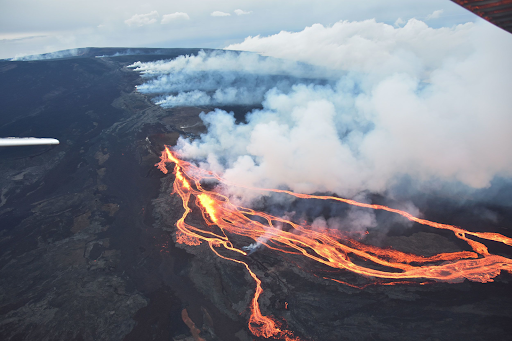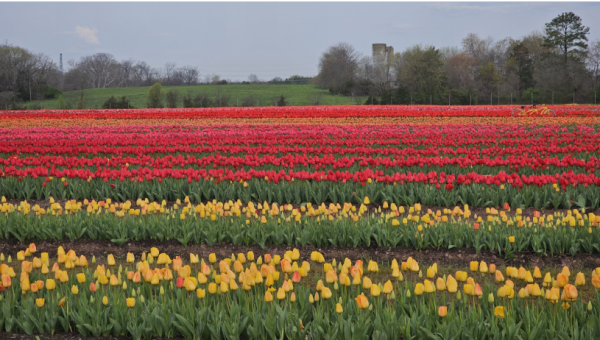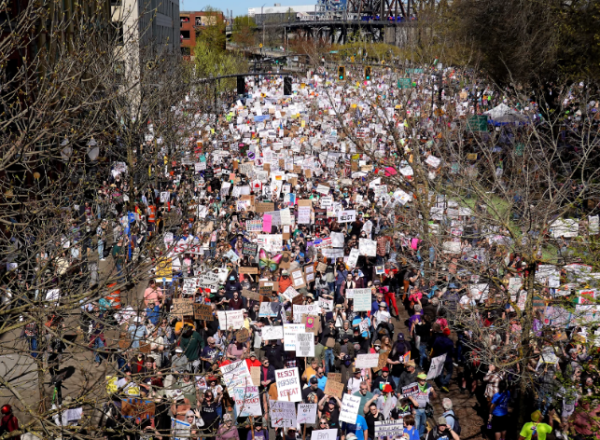Hawaii’s volcano eruption ends

Image via USGS
The Hawaiian Mauna Loa volcano erupted for the first time in 38 years. The volcano, which is located on the state’s Big Island, began erupting on November 27th, 2022 and ended on December 13th. Many tourists and Hawai’i residents wanted to visit the historic eruption, causing a tourism spike for the area.
On December 12th, scientists said that they believe that the eruption of the largest volcano in the world was ramping down and could end soon. The next day the volcano’s eruptions stopped. The lava flows did not cause any significant damage to the island, but flight warnings were issued to pilots to avoid the toxic volcanic smog and ash clouds being released by the eruption. While the eruption hasn’t been damaging to property or caused any fatalities, it did cause harm to some scientific equipment measuring carbon dioxide in the atmosphere.
Mauna Loa is the largest active volcano in the world, taking up more than half of the mass of Hawai’i island. It emerged from sea level around 300,000 years ago, and has a surface area of around 1,900 miles. For a brief time there were two volcanoes erupting on the island, as the nearby Kilauea volcano was erupting simultaneously. The two share the same source of magma, and Kilauea is located to the east of Mauna Loa. Kilauea has been continuously erupting since 1983, but recently ceased, with its summit crater crusting over. Mauna Loa stopped erupting the day after Kilauea.

Lucy is a Junior at South Lakes High School. This is her third year of writing for the Sentinel, and she is excited to continue to create and edit articles...











